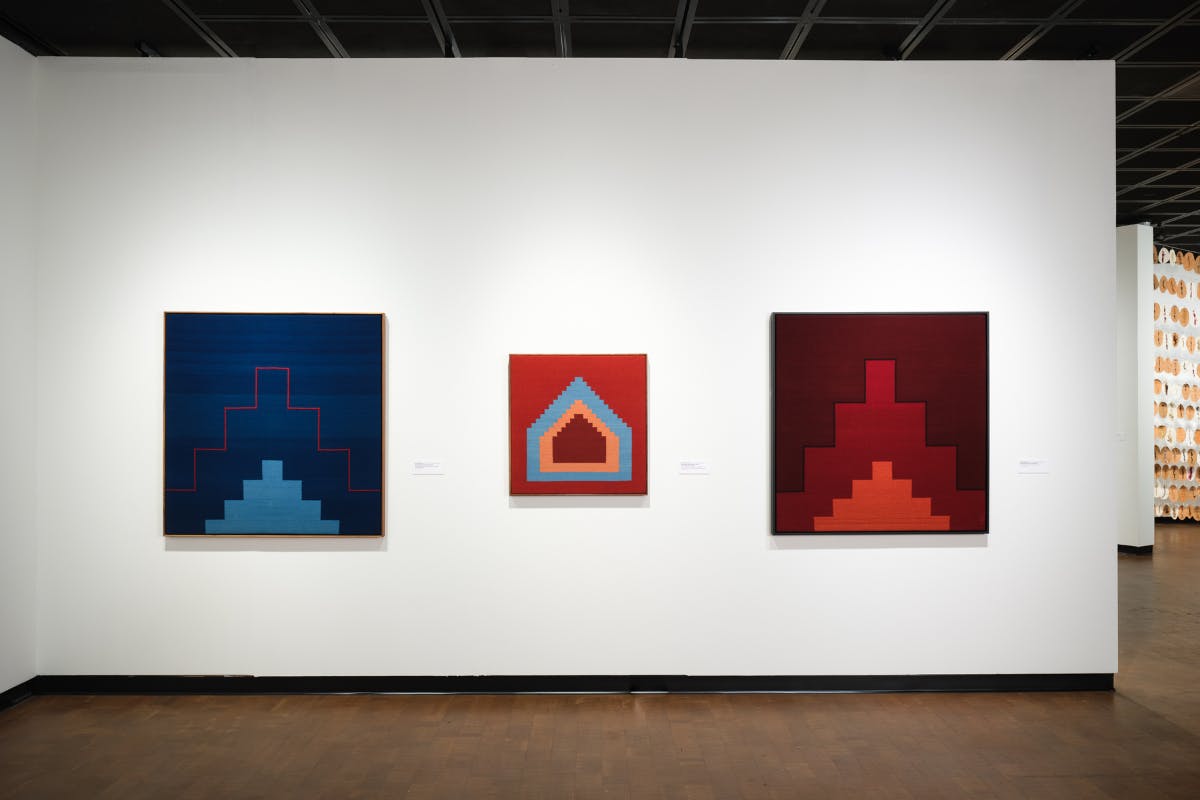The Fowler Museum at UCLA presents ‘Sangre de Nopal/Blood of the Nopal: Tanya Aguiñiga & Porfirio Gutiérrez en Conversación/in Conversation’

The Fowler Museum at UCLA and the Museum of Contemporary Art Santa Barbara present Sangre de Nopal/Blood of the Nopal: Tanya Aguiñiga & Porfirio Gutiérrez en Conversación/in Conversation, the first of two PST Art: Art & Science Collide exhibitions at the Fowler exploring traditional ecological knowledge and Indigenous artists.
This exhibition brings together Tanya Aguiñiga (b.1978, San Diego, CA), Los Angeles-based artist, designer, and craftsperson, and Porfirio Gutiérrez (b. 1978, Teotitlán del Valle, Mexico), Ventura-based Zapotec textile artist and natural dyer. These artists share a profound sense of care and concern for the traditional ecological knowledge of the Indigenous Oaxacan diaspora and for the sociopolitical crises that affect Indigenous communities on both sides of the Mexico–U.S. border.
Sangre de Nopal/Blood of the Nopal features two- and three-dimensional textile works, and performance and video commissions by both artists. Aguiñiga and Gutiérrez also selected early 20th-century Oaxacan textiles and weaving instruments from the Fowler collection, which are presented in dialogue with contemporary textiles woven by Gutiérrez’s family in Teotitlán del Valle, and with embroidered and woven works by Indigenous Mixteca immigrant women farmworkers living in Santa Maria, California.
This room draws reference to the LIS DXAN, temporary devotional structures layered with rugs and textiles during Holy Week celebrations in Teotitlán del Valle. It leads visitors to center of the gallery, a gathering space and hands-on interactive lab activated with conversation and collaborative work throughout the run of the exhibition.
Both Aguiñiga and Gutiérrez work with natural fibers and dyes, including cochineal, a red pigment developed by the Zapotec peoples around 500 BC, and the name of the tiny silver insect that feeds on prickly pear cactus or nopal. When the insects are dried and ground into powder, the carminic acid in their bodies miraculously transforms into a velvety base for a brilliant red dye. The ingenuity, chemical stability, and chromatic intensity of cochineal changed the course of art and culture around the world. Even today natural and synthetic carmine variants are used to color cosmetics, pharmaceuticals, food, beverages, and luxury textiles.
Despite the global scale and impact of cochineal, its spiritual and scientific origins within Indigenous Mexican communities remain little understood or acknowledged. The artists approach cochineal as a means of engaging with ancestral knowledge, collective memory, and personal experiences with migration and displacement.
Their focus on cochineal provides a case study in Indigenous innovation, uplifting not only historical contributions, but one of many legacies inherited by the Indigenous Oaxacan diaspora living and working in California.
About the Artists
Tanya Aguiñiga was born in 1978 in San Diego, California, and raised in Tijuana, Mexico. An artist, designer, and craftsperson working with traditional craft materials, she collaborates frequently with other artists and activists to create sculptures, installations, performances, and community-based art projects. Drawing upon her upbringing as a binational citizen who daily crossed the border from Tijuana to San Diego for school, Aguiñiga’s practice speaks to her divided identity, and aspires to tell the larger and often invisible stories of the transnational community. She lives and works in Los Angeles.
Porfirio Gutiérrez is a California-based Zapotec textile artist and natural dyer, born in 1978 and raised in the richly historic Zapotec textile community of Teotitlán del Valle in Oaxaca, Mexico. He grew up immersed in color, surrounded by the wildness of Oaxaca’s mountains, and steeped in the knowledge of plants for healing and for color. His life’s work has been revitalizing and preserving traditional Zapotec natural dye techniques with a focus on reinterpreting traditional textiles and materials.
Credits
Sangre de Nopal/Blood of the Nopal: Tanya Aguiñiga & Porfirio Gutiérrez en Conversación/in Conversation is organized by the Museum of Contemporary Art Santa Barbara and developed in collaboration with the Fowler Museum at UCLA. The curatorial team includes John Connelly, gallery director, Atkinson Gallery at Santa Barbara City College; Dalia Garcia, program director and interim executive director, Museum of Contemporary Art Santa Barbara; and Audrey Lopez, director and curator of public art, Rose Kennedy Greenway Conservancy. Curatorial support was provided by Silvia Forni, Shirley & Ralph Shapiro Director, Fowler Museum; and Amy Landau, director of education and interpretation, Fowler Museum. Tanya Aguiñiga and Porfirio Gutiérrez served as artist advisors to the project. Additional project support has been provided by Hector Manuel Meneses Lozano, director, Museo Textil de Oaxaca; and Frederick Janka, artist advocate, cultural producer, and president, Board of Trustees, Museum of Contemporary Art Santa Barbara.
Sangre de Nopal/Blood of the Nopal is made possible through a lead grant from Getty as part of the PST ART: Art & Science Collide initiative. Additional funding is provided by the Museum of Contemporary Art Santa Barbara, the Carolyn Glasoe Bailey Foundation, and the Pasadena Art Alliance. Educational programs are supported by the Nissan Foundation. Special thanks to the Museo Textil de Oaxaca. The companion exhibition Sangre de Nopal/Blood of the Nopal: Traditional Ecological Knowledge and Contemporary Art is also part of PST Art: Art & Science Collide and on view at Museum of Contemporary Art Santa Barbara, October 6, 2024–January 12, 2025.
Sangre de Nopal/Blood of the Nopal is among more than 60 exhibitions and programs presented as part of PST Art. Returning in September 2024 with its latest edition, PST Art: Art & Science Collide, this landmark regional event explores the intersections of art and science, both past and present. PST Art is presented by Getty. For more information please visit pst.art. With seven granted projects, UCLA’s expansive presence in this year’s PST Art—the nation’s largest art event—demonstrates the university’s unique strengths as a research institution and the far-reaching impact of its research and creative endeavors. UCLA’s involvement underscores its commitment to fostering artistic innovation and interdisciplinary collaboration, showcasing what is possible when the worlds of art and science combine.

